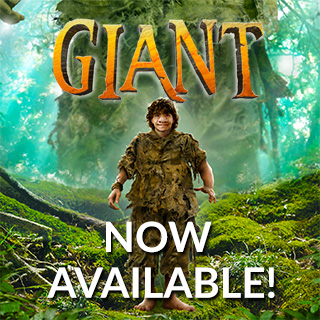T. A. Barron — The Booklist Interview
with Sally Estes
Booklist
April 2001
Original Article | PDF
While doing research for The Merlin Effect (1994), T. A. Barron became aware of how little had been written about Merlin’s youth. His curiosity about the magician as a child and a young man led to the Lost Years of Merlin (1996), which he thought was the beginning a trilogy. He still thought he was writing a trilogy when The Seven Songs of Merlin came out in 1997. But as he was working on the third book, The Fires of Merlin (1998), he recalls being told by Merlin “in no uncertain terms that the tale of his lost years could not possibly be told in just three volumes.” Hence, the trilogy became a five-book saga, with The Mirror of Merlin (1999) and The Wings of Merlin (2000).
Booklist: When did you start writing?
Barron: As a kid, I often dreamed up stories and poems—especially about nature. My first real story, written when I was seven or eight, was called “Autobiography of a Big Tree.” My family moved to a ranch in Colorado, and I continued writing outside under the ponderosas. In middle school, I produced my own little magazine with the bizarre title “Idiot’s Odyssey.” And I kept writing, in bursts, through college and my years at Oxford as a Rhodes Scholar. While on the Rhodes, I took a year off to travel through Asia and Africa. That was when I began my first novel. Nobody ever published it (my file of rejection letters was an inch thick), but I felt drawn to the novel as a form of story with lots of elbow room for characters, places, and ideas. Later, when I was working in a business in New York, I would often steal away to write. Finally, with the encouragement of my wife Currie, I moved back to Colorado to write full time. That was more than 10 years ago, and I haven’t had a moment of regret. I feel very, very lucky to get to follow my deepest passion.
Booklist: But why fantasy?
Barron: Fantasy appeals to me because of its possibilities in both depth and breadth. Virtually anything is possible in well-written fantasy. The best fantasy can awaken our senses, our emotions, and also our spirits. But to pull this off, the writer must somehow create an imaginary world that feels every bit as real as the world we live in. And that’s not easy. It requires making every detail true and weaving all the threads into a believable tapestry. A walk on the mythic isle of Fincayra should feel just as sensuous and true as a walk in Rocky Mountain National Park.
Booklist: Nature plays a large role in your Merlin tales, and your exploration of it can be related to today’s environmental problems. Is this intentional?
Barron: as a Druid, the Merlin of lore was closely connected to the patterns and mysteries of nature. So as I imagined the lost years of his youth, it was important—and fitting—that the earth be his greatest mentor. Second, as a lover of nature myself, I was delighted that Merlin gave me the chance to explore humanity’s relationship with the wider universe. As a result, young Merlin learns about many things—humility, love, grief, rebirth, compassion, and transformation—from nature.
Booklist: What do you think Thomas Malory would have thought about the mass of literature spawned by his Morte D’Arthur?
Barron: My guess is that Malory wouldn’t have been surprised. He must have known that he had tapped into an incredibly rich vein of characters, dramas, and ideas. There is one primary reason we keep telling the old tales, and creating new ones, about Merlin, Arthur, Guinevere, Lancelot, and all the other figures in Camelot. The characters, with all their dilemmas, tragedies, and triumphs, speak to our highest ideals as well as our gravest flaws. It is no accident that writers as diverse as Tennyson, Ariosto, Shakespeare, Mary Stewart, John Steinbeck, and T. H. White have followed in Malory’s wake.
Booklist: Did you read fantasy as a young adult?
Barron: No. But I devoured biographies and nature writing. So I grew up with tales of heroic characters such as Abraham Lincoln and Helen Keller, and with the vivid nature writing of John Muir and Rachel Carson. My interest in fantasy didn’t happen until my twenties: I discovered Tolkien and L’Engle and was hooked. I think you can see, in the kinds of fantasy I write, the influence of my early readings. My interest in heroes (as opposed to mere celebrities), and my pull toward the natural world, are as strong as ever. Those are key themes in my life.
Booklist: What do you think draws young adults to fantasy?
Barron: The freedom to travel anywhere, without any limits, in one’s own imagination. If fantasy is well crafted, we really believe in those imaginary worlds. We can explore them deeply, and return any time. I also think the opportunity to gain perspective on our own world is an important attraction. Through the distorted mirror and the moral vision of the author, we can see ourselves in new ways. What we find may be disturbing or inspiring — or simply absurd. But it is always valuable.
Booklist: Do you plan to expand on Merlin by looking at other aspects of Arthurian legendry?
Barron: Not for some time. The process of writing the five novels has left me both exhilarated and exhausted. But the story of his lost years is finally complete. Someday, no doubt, I’ll return to the world of Arthurian lore, and perhaps to Merlin himself. It’s just too wondrous a world to stay away forever. Right now, though, I need to do something different.
Booklist: What do you have in mind?
Barron: I’ve started a short novel, mythic in tone, about a homeless girl who feels strangely drawn to the forest. The working title is Tree Girl. I’ve also just finished a picture book about a brave girl and a mountain guide, set in Colorado a century ago. It’s based on an intriguing historical event, and will be titled A Throne in the Clouds. Beyond that, I’m toying with a fantasy so bizarre I don’t know where it’s going to lead!
—Interview conducted via e-mail by Sally Estes

